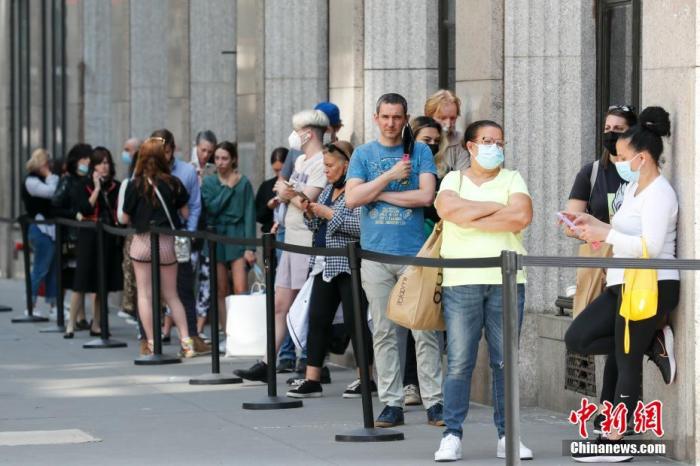China News Service, July 30. According to the US Chinese website, on the 29th local time, Emergent BioSolutions (EBS) announced that the US Food and Drug Administration (FDA) allowed it to resume production of Johnson & Johnson's new crown vaccine. Raw materials.
Due to pollution issues, the FDA closed EBS's plant in Baltimore, Maryland in April.
The company said in a press release that the FDA had previously conducted an "extensive review" of the plant and developed a quality improvement plan.
But the company did not give a timetable for when it expects to restart production.
On April 28, local time, a long line of customers lined up in front of a discount store in Manhattan, New York City, USA.
Photo by China News Agency reporter Liao Pan
The plant in Baltimore was used to manufacture Johnson & Johnson and AstraZeneca's new crown vaccines, but after the two vaccine components were confused, production was suspended. This error caused 15 million vaccine doses to be thrown away.
The FDA issued a report pointing to several violations of the plant, including pollution, lack of preventive measures, substandard sanitary conditions and insufficient training.
After that, the FDA worked with EBS to improve its production and reviewed the vaccine data produced by the facility, allowing several large batches of vaccine to be sent.
At the same time, Johnson & Johnson also confirmed that the FDA approved the decision to resume production.
The FDA said in June that the plant was not ready to resume production as an "authorized manufacturing plant", but promised to work with EBS to resolve the remaining issues.
According to reports, the U.S. government signed a $628 million contract with the company to make it a major factory for the production of vaccines from Johnson & Johnson and AstraZeneca.
A congressional investigation revealed that the company had been warned of manufacturing problems before it was awarded the contract.
EBS founder and executive chairman El Hibri testified in May that AstraZeneca, Johnson & Johnson, and the federal government knew about the shortcomings of the facility before reaching an agreement.

